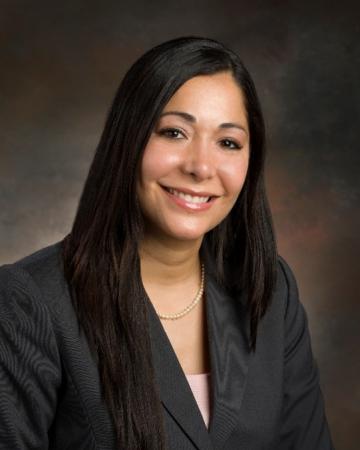
Brenda Gracia-Diaz
Brenda Garcia-Diaz
Savannah River National Laboratory
Tuesday, December 12, 2023
12:00pm
NW17-218 Hybrid
Abstract: First-generation fusion machines are anticipated to run on deuterium-tritium (D-T) fuel and the rates of tritium processing that will be needed are anticipated to be 1 or 2 orders of magnitude higher than typical in state-of-the-art processes. Recent FESAC and NASEM reports highlight the need for fuel cycle and blanket technology development and in demonstrating a fuel cycle at relevant processing rates. SRNL has unique expertise in hydrogen isotope processing technologies and has demonstrated the ability to effectively apply its tritium capabilities over 65 years of experience with multi-kilogram quantities of tritium. SRNL is building a leadership role in Fuel Cycle R&D for the Office of Science’s Fusion Energy Sciences Program though both the delivery of the Tokamak Exhaust Processing (TEP) system to ITER as well as Fusion R&D to help support next generation technologies that can both help companies get to first generation fusion pilot plants and next generation fusion devices. The SRNL fusion team is researching methods to scale-up fuel cycle technologies and make the process more continuous. These improvements include working on solutions such as direct internal recycling (DIR), evaluating different technology options using process models, and developing tritium accountancy methods for continuous fuel cycles. SRNL is also developing novel technologies such as the hydrogen pump oil regeneration (HyPOR) loop, direct LiT electrolysis, and combined redox control and extraction (CoRExt). To assist in fusion commercialization, SRNL is consulting with DOE, NNSA, and community members on topics including nonproliferation, waste disposal, fusion regulation, workforce development, community engagement, and other topics that are important to advancing fusion commercialization. This presentation will provide an overview of technology development and commercialization support activities.
Bio: Dr. Garcia-Diaz is the Program Manager for Fusion Energy at Savannah River National Lab. She served as a committee member on the 2021 National Academy of Science report entitled “Bringing Fusion to the US Grid”. She has helped SRNL to develop a strategic plan for fusion energy and is working to execute the plan that is focused on leadership in the fuel cycle. This strategic plan includes addressing relevant aspects of deuterium-tritium fuel cycles including non-proliferation concerns. Dr. Garcia-Diaz has worked with community partners (including MIT, CFS, and others) to develop roadmaps that can help guide Fuel Cycle and Blanket development to assist in fusion commercialization.
Dr. Garcia-Diaz has worked with Savannah River National Laboratory (SRNL) since 2007 and she creates and leads dynamic teams that find solutions to clean energy challenges (e.g. concentrating solar power (CSP) corrosion, fusion energy, and accident tolerant fuel (ATF) development). She has been the overall PI or SRNL co-PI on projects with: 1) the DOE Solar Energy Technology Office SunShot program, 2) the Office of Science Fusion Energy Science Program (FES), and 3) the DOE Nuclear Energy projects. Dr. Garcia-Diaz was the program manager on nuclear material storage programs looking at corrosion and degradation in nuclear material storage containers before being promoted to SRNL Energy Materials Research Manager. Brenda led Gen 3 molten salt corrosion mitigation efforts within the DOE SunShot program through three projects led by SRNL and NREL. Dr. Garcia-Diaz has won the ASM Silver Award, the South Carolina Governor’s Young Scientist Award, and the inaugural SRNL Most Valuable Project award for LDRD return on investment. She also serves on the MIT LIBRA Technical Advisory Board and has served as a board member for the AIChE RAPID consortium for Process Intensification. She is a member of External Advisory Boards for the University of South Carolina Chemical Engineering Department and the Clemson University Materials Science and Engineering Department.